In today’s world of sleek touchscreens and silent technologies, it’s easy to forget that daily life once had its own distinctive soundtrack. Before digital interfaces and wireless connections, our everyday tools and appliances announced themselves with unmistakable sounds that formed the ambient backdrop of our lives. These mechanical melodies and analog acoustics didn’t just serve functional purposes—they created sensory memories that many of us can still vividly recall decades later.
1. The Rotary Phone Dial’s Satisfying Whirl
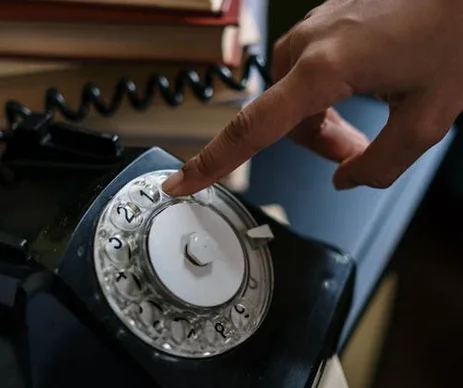
Few sounds capture the pre-digital era like the circular dance of a rotary phone dial. That mechanical whir as your finger released each number, followed by the distinctive click-click-click as the dial returned home, created a rhythmic prelude to every call. The longer the number contained higher digits like 8 or 9, the longer you waited through that signature sound, building anticipation for the connection about to be made. GeekMom is still greatly fond of the rotary phone and has good reason to still appreciate this, and maybe continue hearing this iconic noise.
The physicality of dialing created a relationship with each phone number—you didn’t just press buttons, you invested time and movement into making that call happen. Party lines added another layer of sonic experience, with distinctive ring patterns indicating whether the call was for your household or a neighbor’s, creating a community connected through these auditory signals. Today’s silent taps on smartphone screens might be efficient, but they’ve lost that tactile dialogue between human and machine that made each call feel like a deliberate act.
2. The Clickety-Clack Symphony of Typewriters
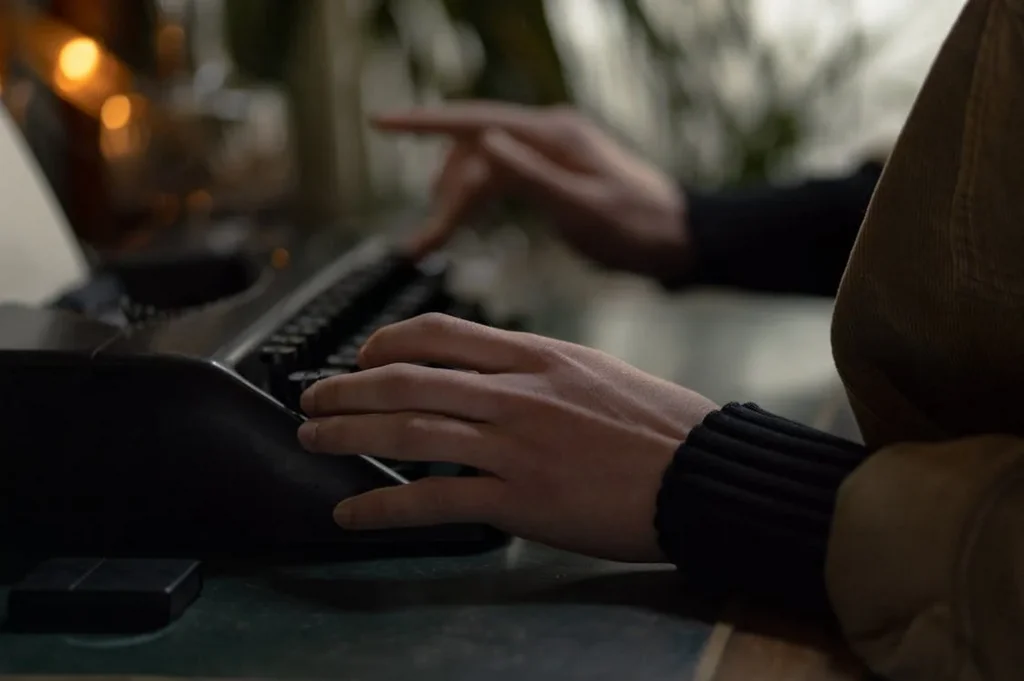
Before the soft tapping of computer keyboards, office environments pulsed with the percussive rhythms of manual typewriters. Each keystroke produced a definitive mechanical action—the hammer striking the ribbon against paper with authority, the bell signaling the approaching margin, and the satisfying zip-slam of the carriage return. Professional typists could achieve impressive speeds, creating a virtuoso performance of clickety-clacks that announced serious work was happening. Xavier Univerity has click-clacked out a whole history of this handy device that’s finding a second home with the latest generation.
The sound itself conveyed information—experienced ears could gauge productivity by tempo, detect frustration in a series of rapid backspaces, or recognize the pause of creative thought in moments of silence. Learning to type meant becoming part of this acoustic tradition, your fingers joining the industrial orchestra that powered communication before silent word processors took over. Modern mechanical keyboard enthusiasts try to recapture this sensory experience, but nothing quite matches the full-bodied resonance of those metal keys striking paper through ribbon.
3. The Cash Register’s Ka-Ching Declaration
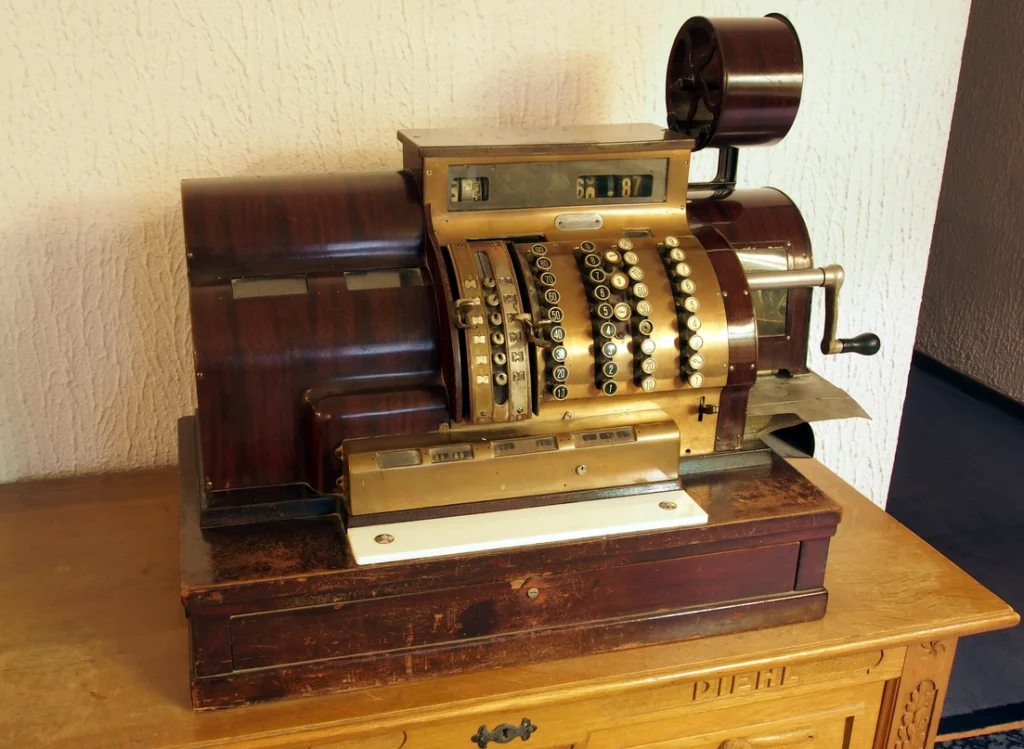
The mechanical cash register’s distinctive ring didn’t just signal a completed transaction—it announced commerce in action with theatrical flair. That satisfying ka-CHING accompanied by the spring-loaded drawer popping open created a Pavlovian response in both shopkeeper and customer, the sound of business being concluded properly. Small businesses had their unique rhythm throughout the day, with busy periods creating a steady percussion of these financial exclamation points. National Museum of American History opens the drawer on the history behind how this iconic device has evolved across decades.
Cash registers weren’t just functional—they were performative pieces that added gravity to the exchange of money. The physical act of pressing those oversized buttons, watching the sale amount pop up on mechanical displays, and hearing that celebratory chime made purchases feel more significant than today’s silent card swipes or digital transfers. Children would often beg to be the one to press the magical buttons that produced both that satisfying sound and the opening drawer—an early lesson in the ceremony of commerce.
4. The TV Channel Dial’s Tactile Click
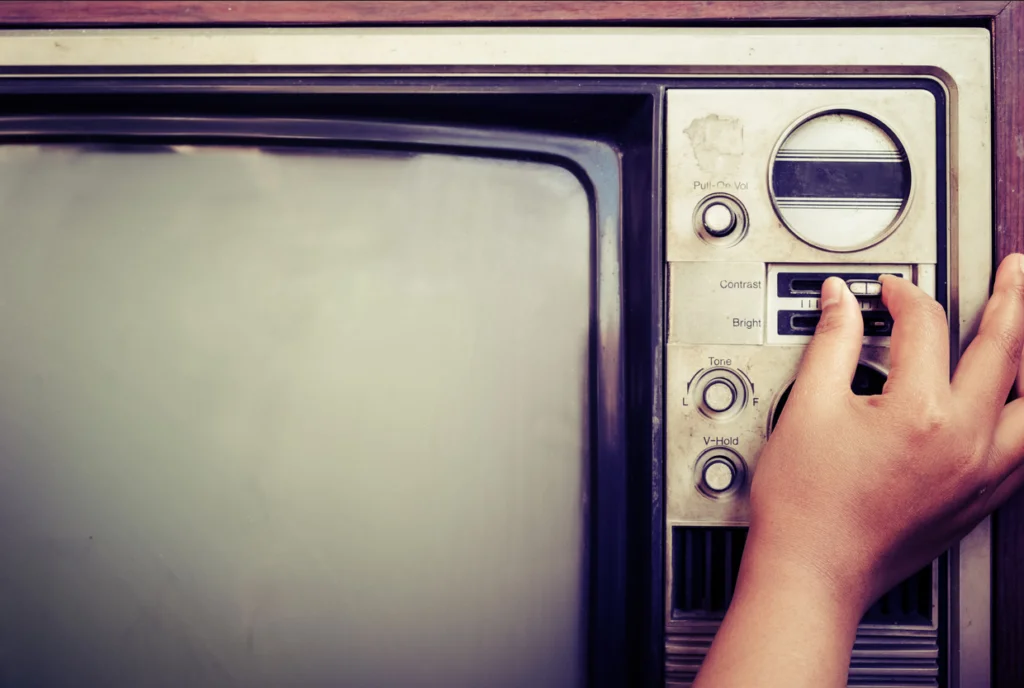
Before remote controls and digital interfaces, changing television channels required physical interaction with a dial that announced each channel position with a definitive click. This chunky selector knob moved with resistance between limited options, often requiring fine-tuning through secondary dials that controlled vertical hold, horizontal hold, and other now-forgotten adjustments. The sound of someone “channel surfing” wasn’t a silent activity but an audible journey through mechanical transitions.
The channel dial created natural pauses in the viewing experience, as each click required deliberate movement and often position adjustments to catch those finicky UHF stations. Family negotiations over viewing choices played out through this tactile interface, with the person nearest the set becoming the temporary gatekeeper of entertainment options. This simple mechanism fostered a different relationship with television—one where channel changes were intentional acts rather than the frictionless, endless scrolling we experience today.
5. The Film Projector’s Whirring Heartbeat
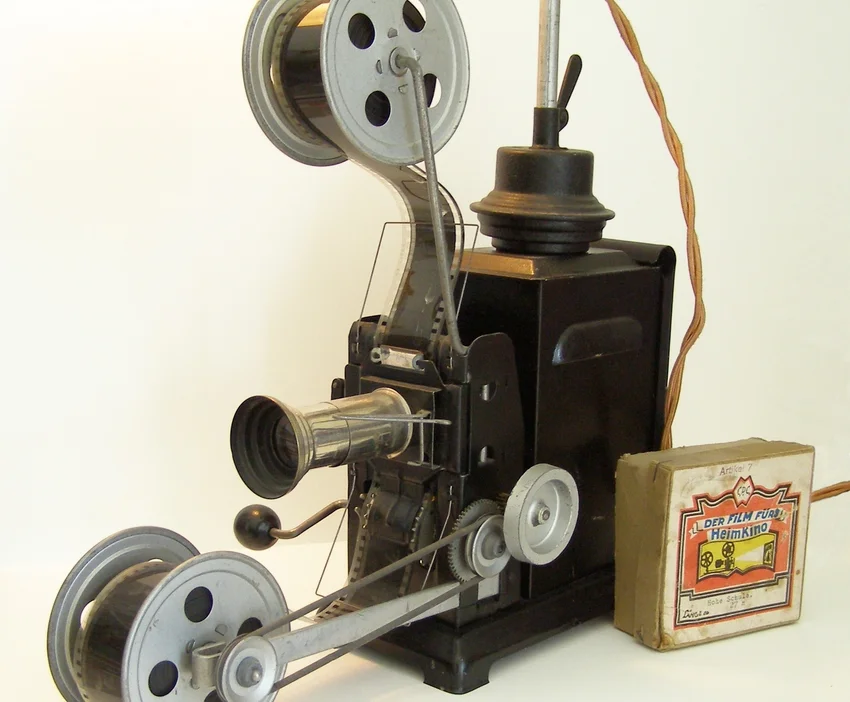
School filmstrips and home movies arrived with their own distinctive soundtrack—the mechanical purr of the projector that signaled learning or entertainment was about to begin. That steady, slightly hypnotic whirring created a sense of occasion as classroom lights dimmed or living room curtains closed, transforming ordinary spaces into impromptu theaters. The sound itself became associated with anticipation, preparing audiences for the experience about to unfold on screen.
Technical glitches added their own acoustic drama—the startling snap of film breaking, the accelerating flap-flap-flap of a film coming off its reel, or the gradual slowdown when bulbs began to overheat. Film projector operators developed their own expertise, recognizing by sound alone when adjustments were needed, creating an almost symbiotic relationship with these mechanical storytellers. Digital projectors may offer clearer images and greater convenience, but they’ve lost that industrious purr that once served as cinema’s mechanical heartbeat.
6. The Polaroid Camera’s Whir and Ejection
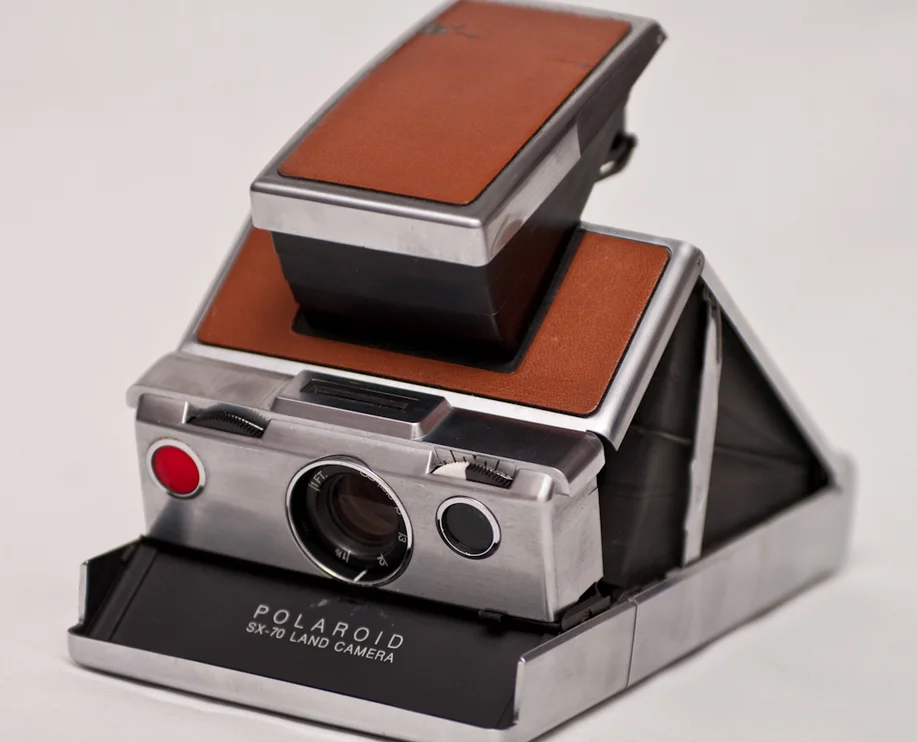
The Polaroid camera’s signature sound combined mechanical complexity and magical anticipation in a way few other devices could match. That distinctive whirring noise as the camera ejected a blank square, followed by everyone’s anticipation as the image slowly materialized, created a shared sensory experience around photography. The sound itself became synonymous with memory-making, announcing that this moment was special enough to capture and keep.
Children would often gather around the emerging image, watching colors and shapes gradually appear while the photographer waved the developing photo (despite instructions not to) or carefully timed its development. Unlike today’s instant digital previews, the Polaroid’s mechanical soundtrack built suspense that made the final result more rewarding, regardless of photographic quality. This technological magic trick, accompanied by its distinctive mechanical noise, created a ceremony around image-making that smartphone cameras simply cannot replicate.
7. The Vinyl Record’s Warm Crackle and Pop
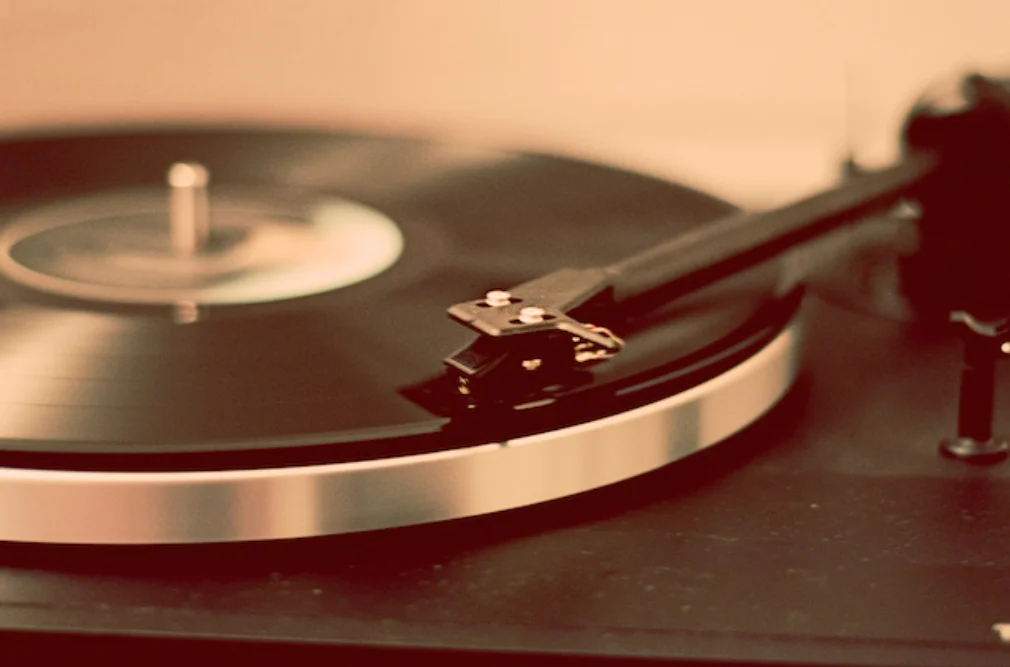
Before digital streaming’s clinical clarity, music arrived with its own atmospheric accompaniment—the gentle surface noise of vinyl records. That warm crackle as the needle settled into the grooves became an inseparable part of the listening experience, providing organic texture to the recorded sound. Audiophiles developed intimate relationships with these non-musical sounds, recognizing the difference between a dusty album, a worn groove, or the anticipated pop of a scratch.
The physicality of records created an acoustic journey—the initial drop of the needle producing that distinctive first crackle, the subtle background texture throughout the music, and the increasingly circular sounds as the needle approached the label. This sonic patina wasn’t considered a defect but part of vinyl’s character, connecting listeners to the physical nature of sound in ways that digital formats intentionally eliminate. Today’s “vinyl revival” is as much about reclaiming these supplementary sounds as it is about the music itself.
8. The Satisfying Chunk of Car Doors Closing

Automotive engineers once designed car doors to close with authoritative solidity, producing that deeply satisfying chunk that communicated quality and security. This purposeful sound—neither too hollow nor too tinny—signaled that you were properly sealed inside a substantial machine, protected from the elements and ready for travel. Luxury car manufacturers famously fine-tuned this sound to convey specific brand identities, recognizing its psychological importance to drivers.
The car door sound functioned as acoustic feedback, eliminating any uncertainty about whether the door was properly closed. Parents would recognize the distinctive sound of teenage drivers closing doors with excessive force, while experienced drivers could tell by sound alone whether a door needed to be closed again for proper sealing. Today’s vehicles, designed for sound dampening and lightweight materials, have largely lost this satisfying acoustic signature that once announced arrival and departure with mechanical certainty.
9. The Metallic Singing of Rotary Lawn Mowers
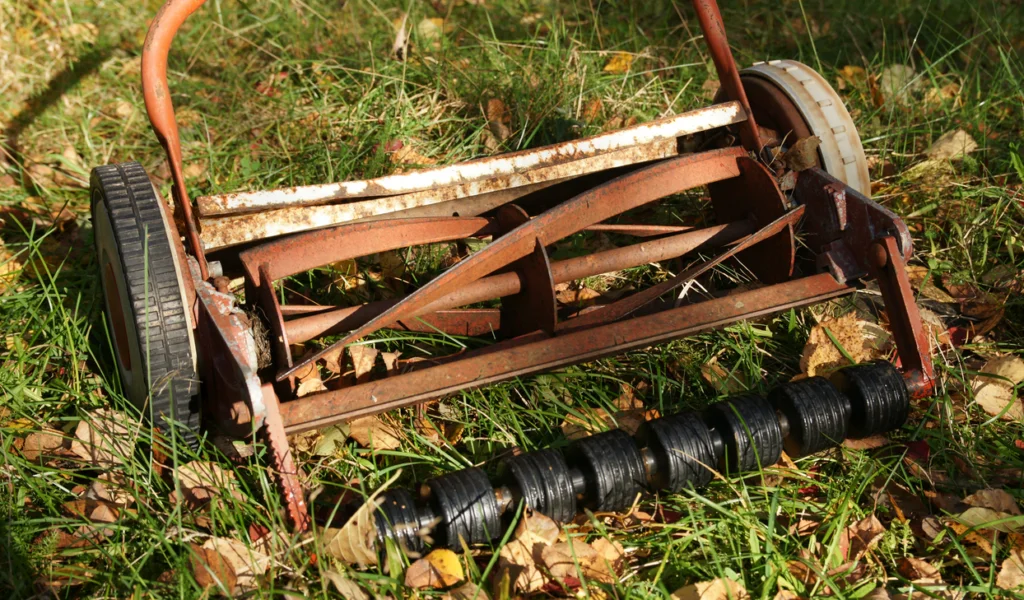
Saturday mornings in suburbs across America once resonated with the distinct mechanical soprano of push mowers—metal blades spinning against metal guards, creating a singing quality unlike today’s gas or electric motors. This harmonious cutting sound rose and fell with the mower’s movement, changing pitch when encountering taller grass or when the operator’s pace changed. The sound traveled through neighborhoods, announcing weekend chores and seasonal rhythms.
The purely mechanical nature of these early mowers created a direct connection between human effort and acoustic result—push harder and the pitch would rise accordingly. Maintaining consistent speed produced a meditative drone that accompanied the physical labor, creating a relationship between operator and tool that modern power equipment doesn’t require. This distinctive singing quality became part of the sensory landscape of suburban life, as recognizable as the smell of fresh-cut grass that accompanied it.
10. The Public Payphone’s Coin Drop
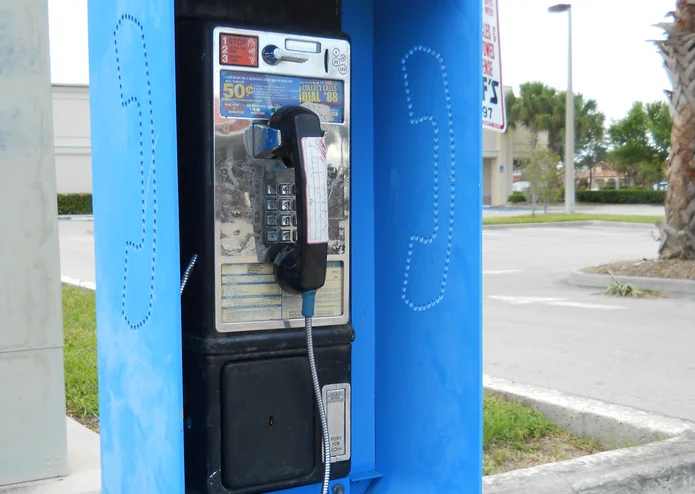
Before cell phones made personal communication ubiquitous, public payphones announced transactions with a distinctive sequence of sounds that everyone recognized. The initial clink of coins dropping into the mechanism, followed by their internal mechanical sorting, created a unique acoustic signature that signaled connection was imminent. Local calls had their rhythm of deposit and dial, while long-distance calls produced more elaborate symphonies of multiple coins making their journey through the phone’s internal workings.
The payphone’s sound design provided essential feedback—too light a sound meant insufficient payment, while the satisfying heavy clunk of quarters gave confidence the call would go through. Rejected coins returned with their own characteristic sound, a mechanical verdict on whether your payment was acceptable. Phone booths themselves amplified these sounds, creating private acoustic chambers where these mechanical transactions echoed slightly, reinforcing the public-yet-private nature of these communication outposts.
11. The Alarm Clock’s Mechanical Ticking and Ring
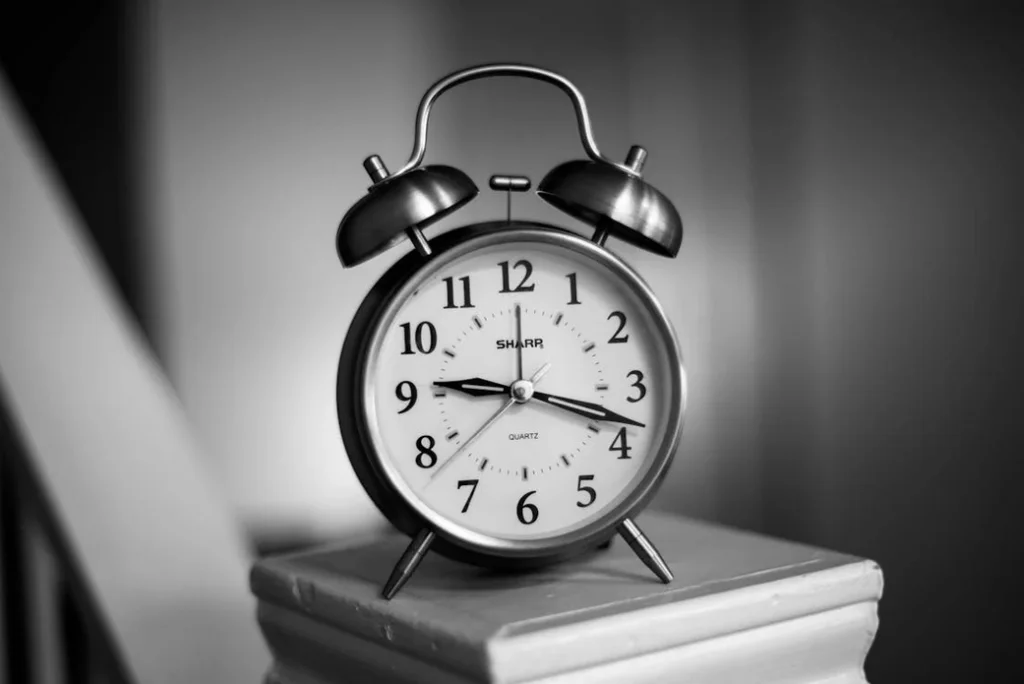
Before silent digital displays, bedside alarm clocks announced their presence continuously through audible ticking that marked each second with mechanical precision. This metronomic sound became the ambient soundtrack of bedrooms, either comfortingly rhythmic or maddeningly persistent depending on one’s relationship with time and sleep. The winding mechanism itself produced a distinctive ratcheting sound, a nightly ritual that connected users physically to the concept of preparing for tomorrow.
The alarm itself was an event of unmistakable acoustic authority—metal bells receiving rapid hammer strikes that would continue relentlessly until physically stopped by human intervention. Unlike today’s customizable digital tones, these mechanical alarms offered no personalization, just effective auditory insistence that sleep time had ended. The physical act of silencing these persistent bells required deliberate engagement, ensuring that waking was a conscious decision rather than the semi-conscious fumbling for snooze buttons that characterizes modern mornings.
12. The Library Card Catalog’s Wooden Whispers
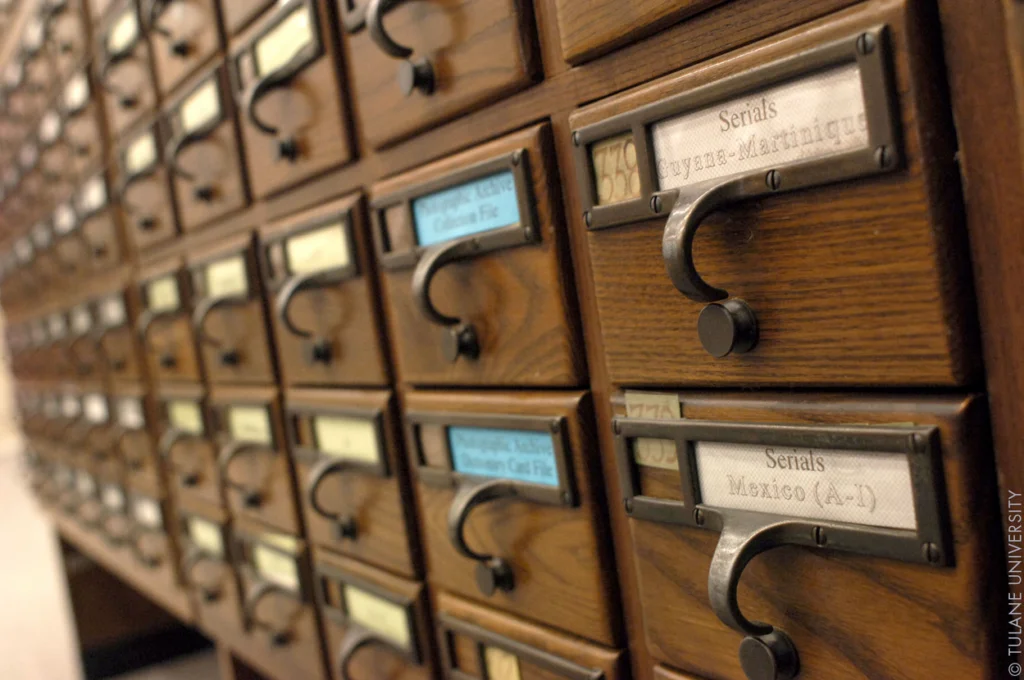
Libraries once contained their own distinctive soundscape centered around the wooden card catalog—that satisfying soft rumble as drawers slid open, the gentle flutter of cards being rifled through, and the muted thump of drawers being closed. These sounds created a reverent acoustic environment that signaled serious research was underway, the wooden components naturally dampening noise while still providing tactile feedback to users.
Searching through these cabinets created a distinctive rhythm—drawer open, cards flipped, reference noted, drawer closed—a physical manifestation of organized knowledge exploration before digital searches. The sound of pencils scratching call numbers onto slips of paper added to this quiet symphony of discovery, while the collective understanding of library silence made these subtle mechanical sounds more noticeable. Digital catalogs may offer superior search capabilities, but they’ve eliminated the sensory experience that once guided users through the world’s knowledge with wooden whispers and paper rustles.
These sounds weren’t just background noise—they were sensory anchors connecting us to our tools, our environments, and each other through shared acoustic experiences. Their gradual disappearance represents more than just technological evolution; it marks a fundamental shift in how we physically engage with our world. While modern devices offer unprecedented convenience and capabilities, they’ve created an increasingly silent landscape where mechanical feedback has been replaced by visual indicators and haptic simulations. Perhaps what we’re truly nostalgic for isn’t just these sounds themselves, but the more tangible, mechanical relationship with technology they represented—a world where our tools spoke to us in voices we could actually hear.


